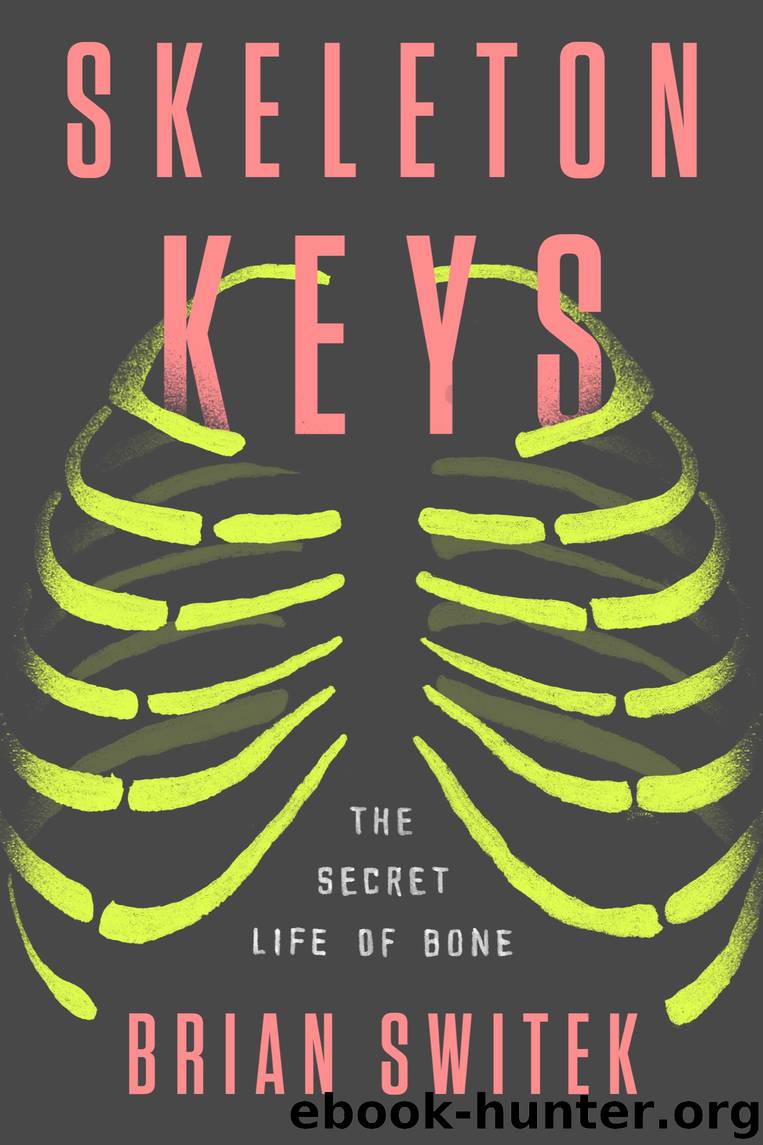Skeleton Keys by Brian Switek

Author:Brian Switek
Language: eng
Format: epub
Publisher: Penguin Publishing Group
Published: 2019-03-05T05:00:00+00:00
SEVEN
BAD TO THE BONE
I never met Richard III in high school. Hamlet was the English department’s prescription from the Bard, and honestly, even if we had been assigned the more dramatic Shakespearean tale about the hunchbacked ruler, I don’t think I would have remembered much. I was always the sort of kid who would pick up Peter Benchley before anything suggested from the classics section. But in 2015, a series of dramatic headlines piqued my interest in the English ruler. After centuries being presumed lost forever, Richard III was shaken from his six-century slumber beneath a parking lot.
Such identifications are not taken lightly, and figuring out who’s who from a pile of old bones is no easy task. There are only a handful of bones that can definitively indicate someone’s biological sex, and bones are often mute—or at least incredibly confusing—when it comes to details like ethnicity and other attributes that we’re quick to assign when looking at someone in the flesh. But still, anthropologists do their best to draw secrets from what remains.
How skeletons are uncovered, collected, and studied varies from case to case. Who is doing the excavating, where, and the nature of the site all make a difference. The way paleontologists uncovered the person inhumed at La Brea differed from the excavation of the crypt beneath St. Bride’s, for example, and forensic analysis of a possible crime scene is going to proceed differently than the study of a historic burial site. Still, where data collection is concerned, archaeologists and anthropologists work according to certain practices to make sure that they’re more or less on the same page; documenting osteological sex, estimating age at death, inventorying teeth, and investigating alterations to skeletons and bones after death are all textbook stuff.
But outside of the nitty-gritty of standards and practices, it’s the questions about the past that drive the science. Writing for Forbes, bioarchaeologist Kristina Killgrove shared what it was like to study a Roman villa called Oplontis that was torched by Mt. Vesuvius in AD 79. It’s as good an example as any of how modern experts go about their work, from the kinds of questions that direct the research to the methods used.
Given that Oplontis was a historic spot—and not a mystery burial out in the boonies somewhere—there was already plenty of background on the villa and who might have lived there. But the real draw was the Oplontis skeletal collection. Previous excavations in the 1980s had turned up more than fifty skeletons crammed together against the walls of one room. Some were removed; others were left exactly where they’ve rested for centuries upon centuries. With her graduate student Andrea Acosta, Killgrove started going through the boxes of removed skeletons with the goal of reassembling some of these poor individuals. “We measure them, look for evidence of disease or healed fractures, and painstakingly catalog their dental health,” Killgrove writes, and that’s because, as we know, pathologies and other signs of life can offer clues about who these people were and what they were doing so long ago.
Download
This site does not store any files on its server. We only index and link to content provided by other sites. Please contact the content providers to delete copyright contents if any and email us, we'll remove relevant links or contents immediately.
| Anatomy | Animals |
| Bacteriology | Biochemistry |
| Bioelectricity | Bioinformatics |
| Biology | Biophysics |
| Biotechnology | Botany |
| Ecology | Genetics |
| Paleontology | Plants |
| Taxonomic Classification | Zoology |
Sapiens: A Brief History of Humankind by Yuval Noah Harari(14319)
The Tidewater Tales by John Barth(12625)
Mastermind: How to Think Like Sherlock Holmes by Maria Konnikova(7278)
Do No Harm Stories of Life, Death and Brain Surgery by Henry Marsh(6905)
The Thirst by Nesbo Jo(6877)
Why We Sleep: Unlocking the Power of Sleep and Dreams by Matthew Walker(6654)
Life 3.0: Being Human in the Age of Artificial Intelligence by Tegmark Max(5512)
Sapiens by Yuval Noah Harari(5322)
The Longevity Diet by Valter Longo(5039)
The Body: A Guide for Occupants by Bill Bryson(5027)
The Rules Do Not Apply by Ariel Levy(4910)
The Immortal Life of Henrietta Lacks by Rebecca Skloot(4548)
Animal Frequency by Melissa Alvarez(4424)
Why We Sleep by Matthew Walker(4394)
The Hacking of the American Mind by Robert H. Lustig(4338)
Yoga Anatomy by Kaminoff Leslie(4332)
All Creatures Great and Small by James Herriot(4268)
Double Down (Diary of a Wimpy Kid Book 11) by Jeff Kinney(4240)
Embedded Programming with Modern C++ Cookbook by Igor Viarheichyk(4141)
